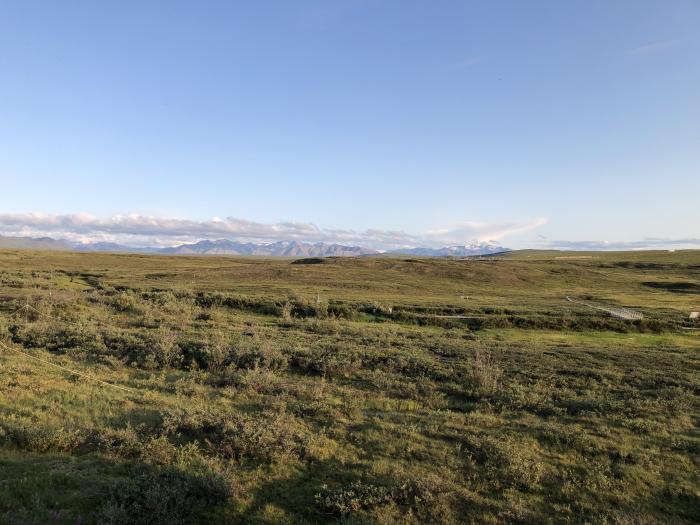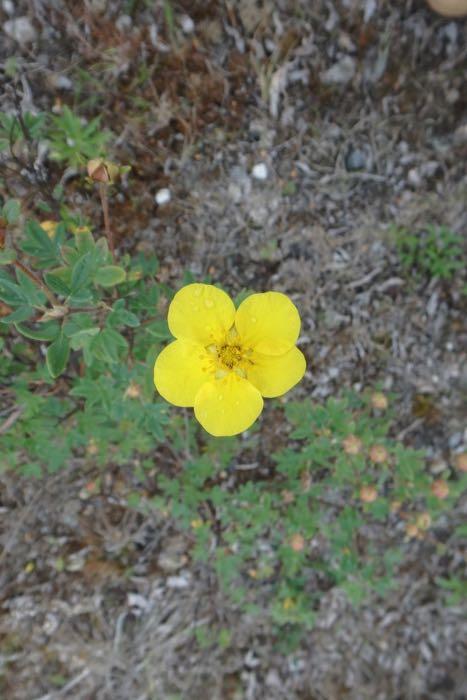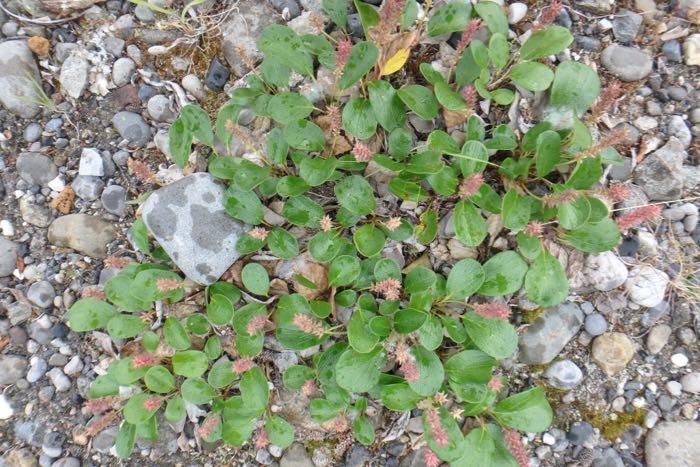 View from my WeatherPort in the morning after a heavy storm the day before.
View from my WeatherPort in the morning after a heavy storm the day before.
The most apparent form of life on the North Slope are plants. When I look across the tundra from my WeatherPort, most of what I can see are plants. The Arctic has a very short summer season, and even in early August, it's beginning to move into the fall season. When the weather turns cold, it's easy to think of mass migration of caribou or the hibernation of grizzlies, but what do plants do? Surprisingly, they've developed astonishing adaptations that have allowed them to become successive, even in such an inhospitable environment.
 Flowering plants have developed many interesting adaptations to attract pollinators.
Flowering plants have developed many interesting adaptations to attract pollinators.
Flowers are used by plants to attract pollinators. Because the density of pollinators is relatively low in the Arctic the plants here have to put on quite a show to get noticed. Most of us observe in home gardens that plants use flower color or smell to get noticed by pollinators such as bees which is the same in the Arctic. However, many flowering species here have other compelling adaptations. Many flowers have adaptations that cause the interior temperature of the flower to be forty to fifty degrees Fahrenheit higher than the surrounding air. This creates a nice, warm heating pad for insects, therefore making them more likely to visit the flowers. Having a higher temperature inside the flower also contributes to higher seed production. In addition, many flowers even move to follow the sun (you may have seen this in timelapse videos of plants) to increase their temperature. Some flowering plants can also grow very slowly and overwinter, meaning that they gradually grow the flower bud. During the summer the bud and stalk will lengthen, but will not open. When winter arrives, the plant will stop growing, but the bud will remain. Then, in the spring, the plant will resume growing, and the flower bud will open.
 Drawf willow plant species. This plant could be many years old, but grows very slowly. Willows are a species that make the cryoprotectant compounds.
Drawf willow plant species. This plant could be many years old, but grows very slowly. Willows are a species that make the cryoprotectant compounds.
Cryoprotectants are another interesting plant adaptation. In very cold weather, small ice crystals can form inside the cells of living things. If ice crystals form inside a cell, it usually kills it. Plants can't move to a warmer location when it gets too cold, so some have adapted to the cold environment by developing the ability to make a type of cellular antifreeze known as cryoprotectants. This compound allows the fluids inside the plant to move, even in extremely cold weather, and avoid ice crystal formation. It is a very energy-intensive process for the plant to make cryoprotectants, so plants grow much slower. This phenomenon is another explanation for why most of the plants found in the tundra grow slowly.
Huryn, A. D., & Hobbie, J. E. (2012). Land of extremes: A natural history of the Arctic North Slope of Alaska. Fairbanks, AK: University of Alaska Press.


Comments
Add new comment